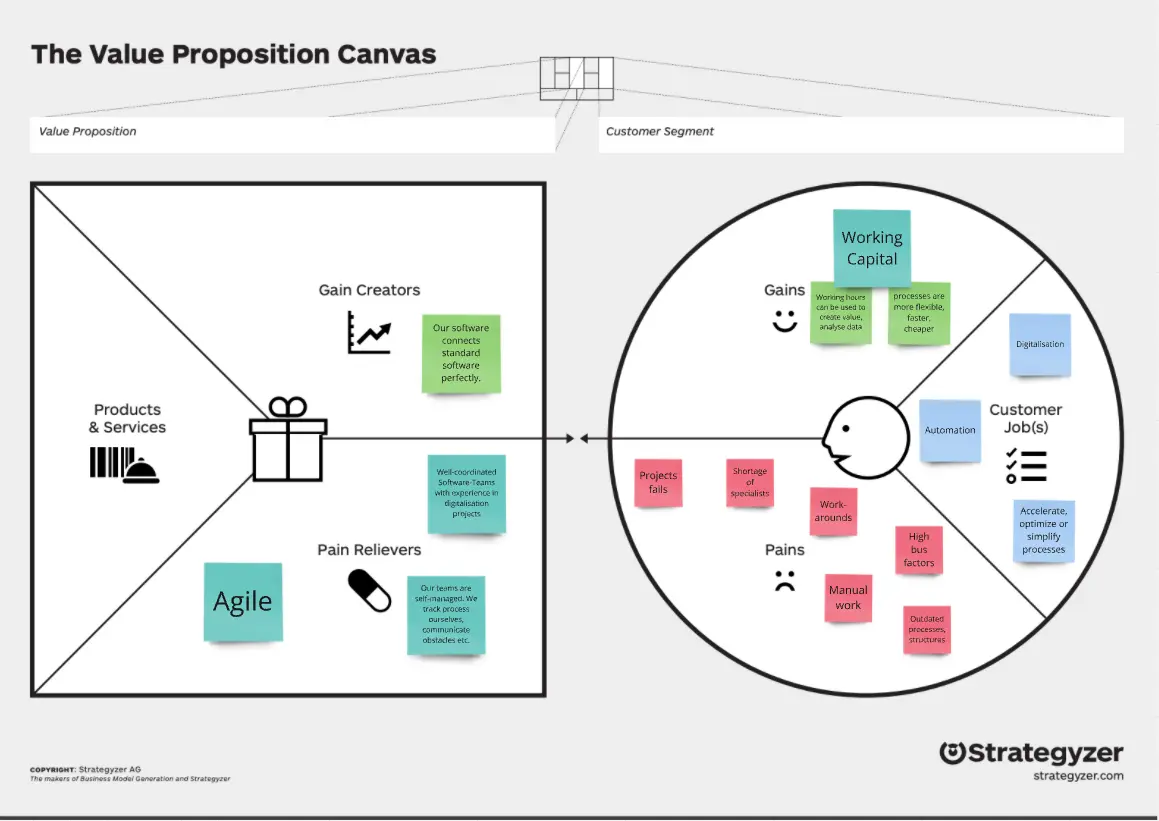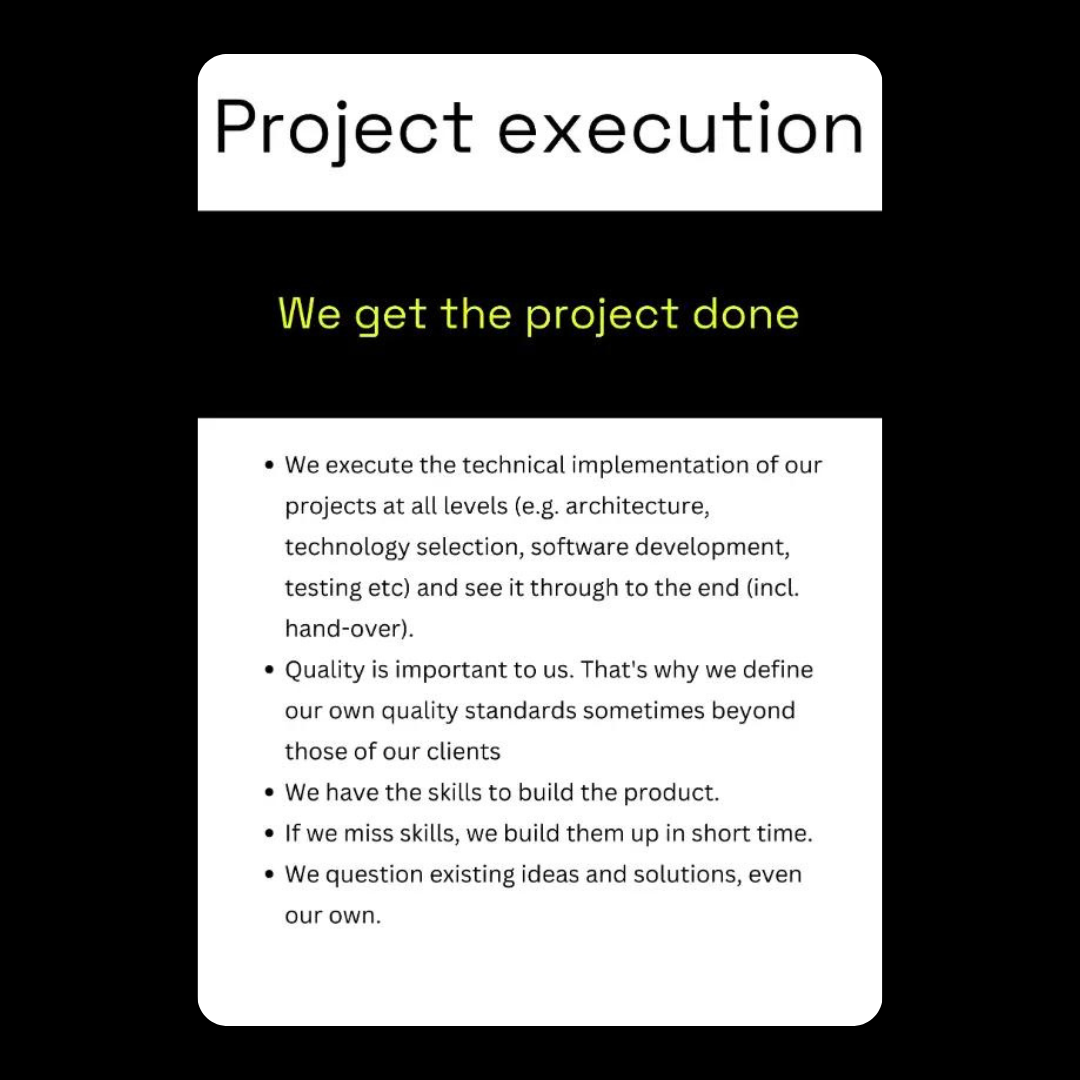Like many companies before us, we thought at some point we need company values to guide us. So we set out to discover ours. But we had difficulties with it and were unhappy with the results.
Those of you, who have worked in environments where values are too generic to be applied to daily life or pretty posters, but empty shells, hanging on walls, will understand our struggle. We wanted something that represented us and what we stand for. We wanted the values to make sense in our work and be applicable when in doubt on how to act.
So after some more or less fruitless meetings and discussions on this topic we changed the questions we were asking ourselves. We started with our customer. And this proved to be the pivotal point to finding something far better for our case. We found our Space Principles. Understandable and applicable guiding principles, which help us make good decisions for our customers in line with who we are at Spaceteams. It is possible to abstract values from them if we wanted to. But who needs values when you have Space Principles?
If you are trying to describe your company values or are at the beginning of defining them, I recommend you try our approach and focus on your customer or user. Maybe our story and the questions we asked ourselves that led us to our principles can help you as well.
Why we needed values
Early in the beginning of Spaceteams we felt we needed values to guide our actions in our work every day. We noticed that across teams working in very different projects it is easy to loose alignment on who Spaceteams wants to be. We often wondered, how do we make sure, that when a customer asks for our help they get Spaceteams - no matter which team works for them? So we asked ourselves what values we wanted to live by.
All of us had experienced what it is like when a company has cool image posters with values like “respect” or “teamwork” hanging in their offices. Yet when you ask employees whether they know the company values or what they mean for their work, it was hard for them to answer. We didn’t want that to happen to us. So it was obvious that our values needed to be clear enough to create the alignment we need. And it was equally important for us, that our values would be more than an inspirational slogan on our virtual office wall.
We believe in the power of strong values to align all members of the company and help with every day decision making. So we set out to find ours.
Where we looked for our values
The Spaceteams leadership group came together for workshops, brainstorming, reflections and discussions to discover our values. We asked ourselves who do we want to be? What do we want to guide us? We came up with some values. Some that we liked to have yet didn’t think they truly suited us. Others that we thought too generic to help with our work. When we finally found some terms that we liked and that seemed to suit us we struggled to define what they were supposed to mean.
Whichever way we looked at it, values proved difficult to find and were too high level to guide us in our work. So we tried something different.
How we found something different
Instead of asking who do we want to be, we asked what are we offering to our customers? We used a Value Proposition Canvas that we had created earlier. We looked at our customers and what they need. We looked at our offer, how we support them in their needs and opportunities. And then we started asking the questions that turned out to be the pivotal ones: how do we fulfill this promise?
What do we need to do? How do we need to act? What do we need to pay attention to?
And this turned into a comparatively easy flow of concrete ideas and examples for each of these questions.
Example:
Let’s look at a reduced version of our VPC (we use the template from Strategyzer).

From right to left: our customers often still need to automate, digitise and accelarate, optimize or simplify processes. Because their pain points are for example a shortage of specialists or a lot of outdated processes.
What we can do to relieve that pain is bringing in a well-coordinated team with the experience of how to automate and digitise well.
It took clustering and several iterations to boil our findings down to 9 key concepts. Additionally we developed, wrote and re-wrote defining phrases for each one. And finally we specified and agreed on some main examples or explanatory phrases to help understand what the concepts are about.
9 concepts might sound a lot to you. Especially when some experts recommend 4 or less, e.g. HBR. We also considered whether we can further reduce the number, especially since some of those concepts address similar ideas or overlap. But in our discussions it turned out we felt we needed the different perspectives of each concept, even if they can overlap in action. And ultimately, research might give you an ideal number, but research isn’t your company, your situation or your need. If one day we feel we should reduce the number of concepts, we will. 🙂
Our Space Principles
Giving those concepts a name was the last step. They weren’t values. They weren’t rules. They weren’t guidelines. So we thought the best way to describe these concepts was guiding principles. But since we are Spaceteams anything gets better when it has “Space” in the name. So our Space Principles were born.
How to make and keep them alive
We want the principles to help us and be applied in our daily work. So in the first introduction of the Space Principles to the company we talked about where they come from. We went through the whole process from VPC to Space Principles with the whole group. Since then we go through it again with every new member of the company. That way everybody has the chance to understand why and how those principles matter.
In order to help with the application of our principles we repeatedly come together in our Spacetime to refresh our memory and knowledge about them. We do case studies, quizzes and tell ourselves about situations in which one or more principle particularly applied.
We make an effort to remember our Space Principles. Which is much easier than it sounds. Because they are grounded in our offer to our customers based on what they need.
For example: Project Execution - a principle that is all about doing what is necessary to get the project done. Sounds simple enough but is key in our experience to stay on track and deliver working results.

Summary
We set out to find values. It was a little rocky. It took time, nerves and didn’t deliver the results we wanted. And then, by changing the focus and the questions we asked ourselves, we found Space Principles instead. In hindsight they are what we were really looking for. Something that guide our decisions and actions in an applicable way on a daily basis. Whenever we thought since we might need values, it was not worth the time. We probably could derive values from our principles. But who needs values when our Space Principles align and guide us so well? So far there is no need for anything else.
If you are unsure about your company values or are looking for them. I whole-heartedly recommend to start by looking at your customers and what you offer to them. We used a value proposition canvas to help us with that. If you are unsure about your customers need and your offer to them I recommend that tool as a good way to start. And then ask yourself how do you fulfill that promise. I believe it will help you find your own concepts or - with some further steps - values, that are grounded in the work that you do. And I am convinced it becomes much easier to remember and live by values, that are based on your offer.





